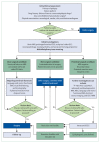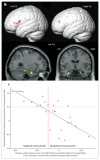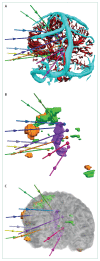Brain imaging in the assessment for epilepsy surgery
- PMID: 26925532
- PMCID: PMC6736670
- DOI: 10.1016/S1474-4422(15)00383-X
Brain imaging in the assessment for epilepsy surgery
Abstract
Brain imaging has a crucial role in the presurgical assessment of patients with epilepsy. Structural imaging reveals most cerebral lesions underlying focal epilepsy. Advances in MRI acquisitions including diffusion-weighted imaging, post-acquisition image processing techniques, and quantification of imaging data are increasing the accuracy of lesion detection. Functional MRI can be used to identify areas of the cortex that are essential for language, motor function, and memory, and tractography can reveal white matter tracts that are vital for these functions, thus reducing the risk of epilepsy surgery causing new morbidities. PET, SPECT, simultaneous EEG and functional MRI, and electrical and magnetic source imaging can be used to infer the localisation of epileptic foci and assist in the design of intracranial EEG recording strategies. Progress in semi-automated methods to register imaging data into a common space is enabling the creation of multimodal three-dimensional patient-specific datasets. These techniques show promise for the demonstration of the complex relations between normal and abnormal structural and functional data and could be used to direct precise intracranial navigation and surgery for individual patients.
Copyright © 2016 Elsevier Ltd. All rights reserved.
Conflict of interest statement
JSD has received personal fees from Eisai and non-financial support from Medtronic and has a patent pending for computer-assisted planning for neurosurgery. MJK has received personal fees from General Electric for PET tracer development, and from UCB, BIAL, and Eisai for antiepileptic drug development. SO has received grants from General Electric, Siemens, IXICO, MIRADA Medical, and IcoMetrix, and has a patent pending for computer-assisted planning for neurosurgery. GPW declares no competing interests.
Figures







References
-
- NICE. NICE guideline [CG137] London: National Institute for Health and Care Excellence; 2012. Epilepsies: diagnosis and management. - PubMed
-
- Jobst BC, Cascino GD. Resective epilepsy surgery for drug-resistant focal epilepsy: a review. JAMA. 2015;313:285–93. - PubMed
-
- Duncan JS. Imaging and epilepsy. Brain. 1997;120:339–78. - PubMed
-
- Duncan JS. Selecting patients for epilepsy surgery: synthesis of data. Epilepsy Behav. 2011;20:230–32. - PubMed
-
- Téllez-Zenteno JF, Hernández Ronguillo L, Moien-Afshari F, Wiebe S. Surgical outcomes in lesional and non-lesional epilepsy: a systematic review and meta-analysis. Epilepsy Res. 2010;89:310–18. - PubMed
Publication types
MeSH terms
Grants and funding
LinkOut - more resources
Full Text Sources
Other Literature Sources
Medical

